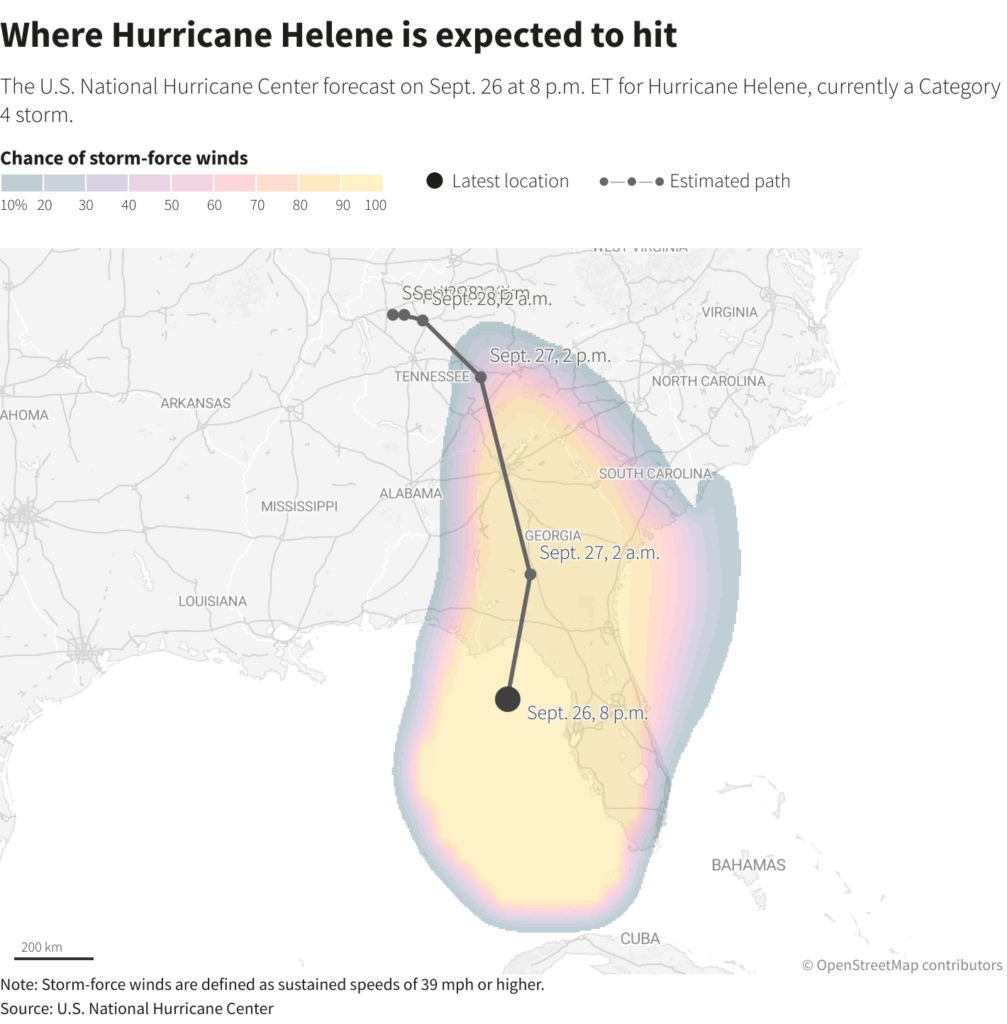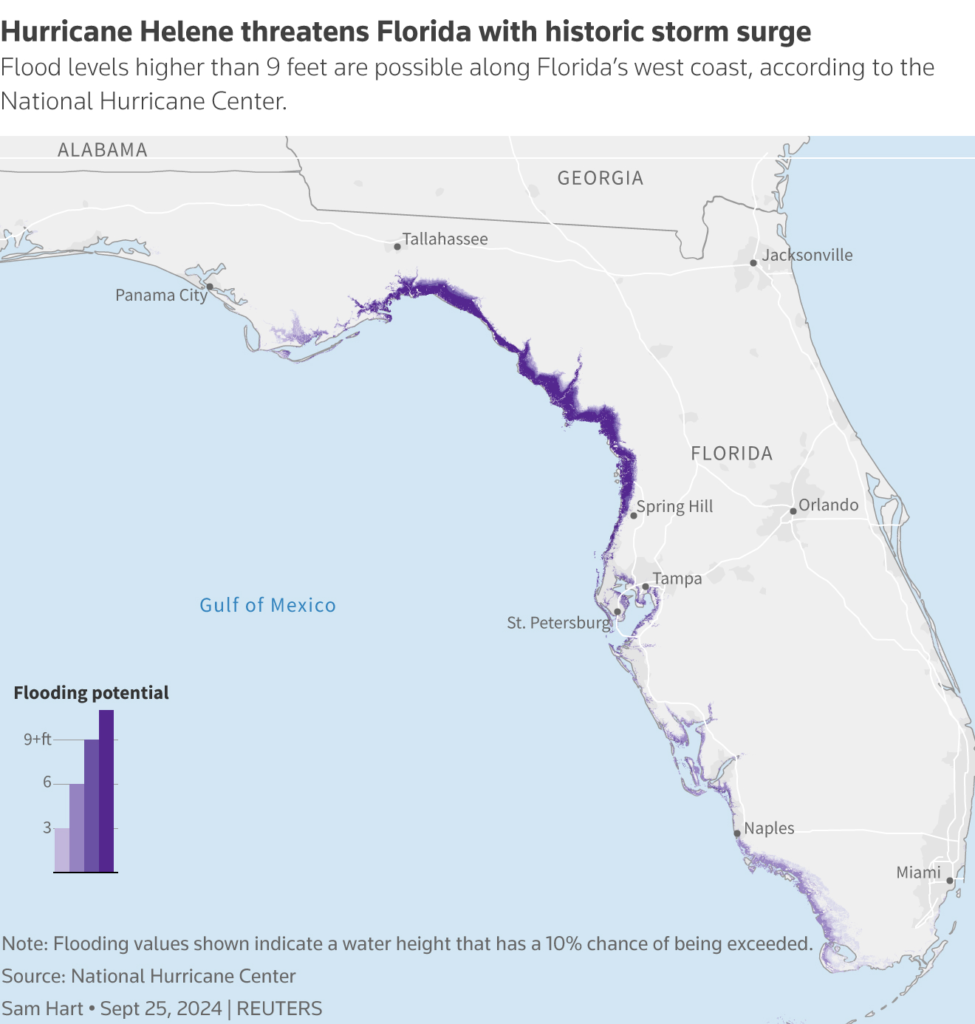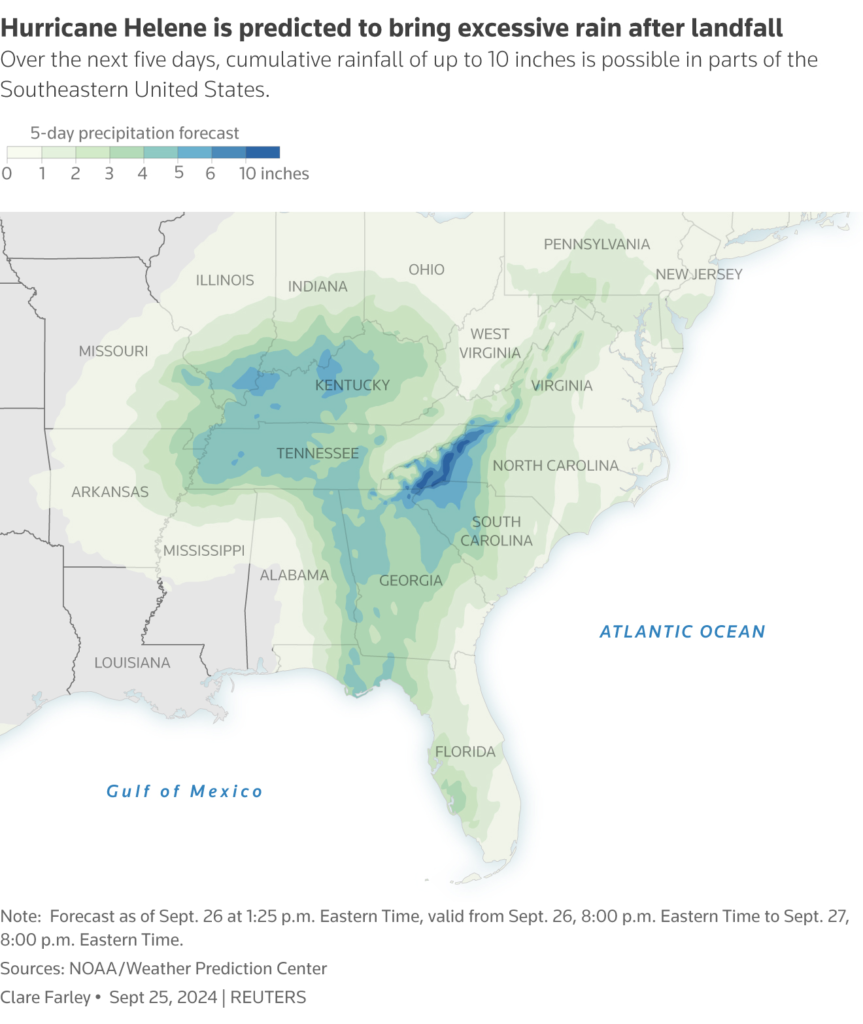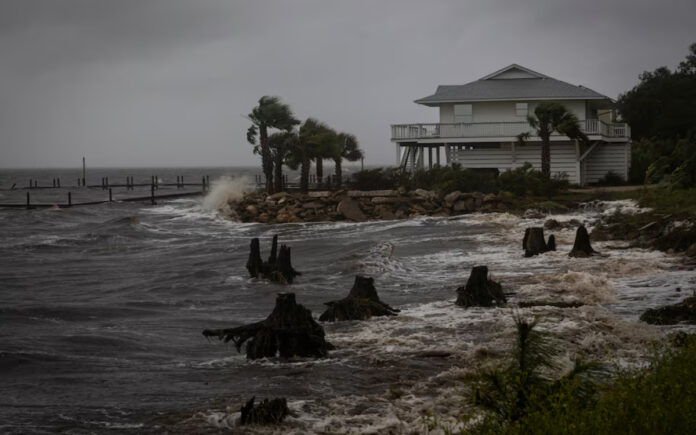Tallahassee: Intensifying Hurricane Helene continues its destructive march toward Florida’s panhandle, flooding roads and shutting down airports as it poses a significant threat to the region. The storm, now a major Category 4 hurricane, has sustained winds near 130 mph (209 kph) and is expected to gain even more strength, according to the National Hurricane Center.
Helene is projected to make landfall around 11 p.m. EDT (0300 GMT Friday) in Florida’s Big Bend region, with officials warning of life-threatening conditions due to the storm’s potentially deadly surge. Florida authorities are urging residents to heed mandatory evacuation orders.
The storm surge—seawater pushed onshore by hurricane-force winds—could reach as high as 20 feet (6.1 meters) in some areas, which is comparable to the height of a two-story building. National Hurricane Center Director Michael Brennan warned in a video briefing that an “unsurvivable scenario” could unfold, with the surge powerful enough to destroy structures and carry vehicles inland.

As of 5 p.m. EDT (2100 GMT), the storm was located about 130 miles (209 km) west of Tampa, Florida. Strong rain bands had already begun whipping Florida’s coastal regions, with the storm’s reach extending beyond state lines. Parts of Georgia, South Carolina, North Carolina, and Tennessee were also experiencing heavy rainfall, with Atlanta under a tropical storm warning.
Pinellas County, located on a peninsula between Tampa Bay and the Gulf of Mexico, saw roads inundated with water by midday. Officials compared the potential impact of Helene to that of Hurricane Idalia from last year, which flooded 1,500 homes in the area. Videos posted on social media by county officials showed submerged beach roads and water overtaking boat docks.
Also Read | Devastation Ahead: Hurricane Helene Makes Landfall, Threatening Lives and Properties

In response to the impending landfall, airports in Tampa, Tallahassee, and St. Petersburg suspended operations on Thursday. Florida Governor Ron DeSantis emphasized the urgency of evacuation efforts, stating, “You have time to get to a shelter, but you’ve got to do it now. Every minute brings us closer to conditions too dangerous to navigate.”
Helene is expected to maintain hurricane strength as it moves inland, possibly affecting areas as far north as Macon, Georgia, on Friday. The storm could bring up to 12 inches (30.5 cm) of rain, threatening Georgia’s cotton and pecan crops, which are currently being harvested. “This storm will impact every part of our state,” Georgia Governor Brian Kemp warned.
After striking the Florida coast, Helene is forecasted to slow down over the Tennessee Valley on Friday and Saturday, according to the National Hurricane Center.
Also Read | ‘Zombie’ Hurricane John Resurfaces, Pummels Mexico’s Pacific Coast
Massive Storm Surge Threatens Coastal Communities
The most alarming threat comes from the expected storm surge, which could reach between 15 to 20 feet (4.6 to 6.1 meters) in Florida’s Big Bend area. Coastal regions across Florida’s Gulf Coast, including Sarasota and Charlotte counties, have issued evacuation orders. In Pinellas County, authorities ordered the evacuation of long-term care facilities such as nursing homes, assisted living centers, and hospitals.
Despite the evacuation warnings, not everyone is leaving. Ken Wood, a ferry boat operator from Dunedin, Florida, about 25 miles west of Tampa, plans to ride out the storm with his 16-year-old cat, Andy. “We’re under orders, but I’m going to stay right here at the house,” Wood told Reuters. “The storm looks like it’ll be a bit west of us, but who knows? I’m sure it’ll be interesting, to say the least.”

Also Read | Harris Vows Support for Ukraine, Denounces ‘Surrender’ Talks in Washington
Officials in Tallahassee are preparing for significant storm damage, with early projections from reinsurance broker Gallagher Re estimating private insurance losses between $3 billion to $6 billion. Additional federal insurance program losses could add another $1 billion.
Energy facilities along the Gulf Coast have scaled back operations, with some production sites evacuated. Federal Emergency Management Agency (FEMA) Director Deanne Criswell announced she would travel to Florida on Friday to assess the damage.
Helene is expected to bring up to 15 inches (38.1 cm) of rain in some areas after making landfall, potentially causing severe flash flooding. Jamie Rhome, Deputy Director of the National Hurricane Center, noted that about half of the deaths in hurricanes typically result from flash floods, particularly when people drive into flooded areas and get swept away. Rhome also highlighted that the hurricane-force wind zone extends 180 miles (290 km) from Florida’s panhandle to southern Georgia. “You need to prepare for prolonged power outages. Those trees are going to come down in strong winds, blocking roads,” he warned.



